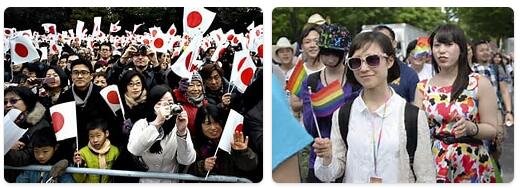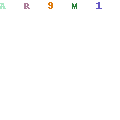Japan is a country located in East Asia, made up of four main islands and 6,852 smaller islands. It is the world’s tenth-largest country by population and has the world’s third-largest economy. Japan is known for its rich culture, advanced technology, and its unique cuisine. The capital city of Tokyo is home to the Imperial Palace and the seat of government and houses some of the world’s most iconic landmarks such as the Tokyo Tower, Tokyo Skytree, and Meiji Shrine. Japan is a major tourist destination with beautiful landscapes ranging from beaches to forests to mountains. Its culture is characterized by its traditional values, such as respect for elders, family loyalty and community harmony. The people of Japan are also known for their hospitality towards visitors from other countries. They have a unique approach to life that includes everything from their fashion sense to their food habits. With its centuries-old history steeped in tradition as well as its cutting-edge technology, Japan truly has something for everyone! See countryaah.com for other countries that start with letter J.
Very many Japanese count as both Buddhists (72 percent) and Shinto followers (95 percent). The traditional Buddhist sects (Jodo, Zen, Shingon) have the greatest support, although the “new religions” (shinko shukyo) have made great progress since 1945. Christians constitute a small minority (about 1.5 percent), but Christian writers and intellectuals have nevertheless played a not insignificant role throughout the 20th century. Japan’s Constitution (1946) states that public funds cannot be allocated to religious groups.

Shinto
Over the centuries, there has been a widespread belief that shinto is a common cultural heritage for all Japanese. This has been particularly expressed in the Japanese cosmogony (mythical creation story) in the work Kojiki (712), which tells of how the Japanese islands and the most important deities were created in the morning by the god Izanagi and the goddess Izanami. Among their offspring was also the goddess of the Sun Amaterasu Omikami, to whom the Japanese empire traces its ancestry. From 1868 to 1945, a nationalist version of Shintoism was state religion in Japan. Shinto was then not defined as a religion, but as a moral system emphasizing patriotism and the notion of the emperor as the descendant of the sun goddess, which all Japanese were obliged to follow.
Buddhism
Buddhism was introduced from Korea in the 500s. In the following thousand years, Buddhism increasingly influenced Japanese society. Buddhism was first developed in the capital Nara (Nara schools). In the 800s, Tendai and Shingon schools were introduced from China. Both were attached to the Imperial House.
From the 1100s on and into the Kamakura period (1185–1333), other Buddhist schools were introduced from China, which appealed more widely to the broad strata of the people: the Pure Land schools (Jodo and Jodo-shinshu) and Zen. The Nichiren sect, with its peculiar lack of tolerance of other Buddhist directions, was formed in the 13th century. During this period, Buddhism and Shinto were subjected to strong mutual influence.
A number of monasteries developed into fortified cities and could mobilize armies of armed monks. The monasteries were eradicated during Oda Nobunaga (1534–1582), but Buddhism has since been used by state power to control the population. In 1638, a system was introduced which meant that each family had to be registered at a Buddhist temple, and only Buddhist priests were allowed to perform rituals in connection with death. After the restoration of the emperor’s political power in 1868, the position of Buddhism was weakened in favor of Shinto.
Christianity
According to thesciencetutor, Christianity was first brought to Japan by the Jesuit Francisco Xavier in 1549 and quickly gained considerable popularity. However, the Catholic missionaries were expelled in 1587, and Christians were subjected to constant persecution until Christianity was totally banned in 1637. However, underground churches continued to exist until the land was again opened for mission in 1859.
New religions
New religions are called shinko shukyo in Japan. From the beginning of the 19th century, a number of religious movements arose, partly with the preponderance of elements of Shinto and partly from Buddhism. Among movements with overweight shinto elements are Omoto; Buddhist directions, for example, are reiyukai, Soka Gakkai and Rissho Kosei Kai; and among directions that cannot naturally be classified in the two major main groups are tenrikyo, PL Kyodan (Perfect Liberty) and Aum Shinrikyo (Supreme Truth).
For the Buddhist directions, the Tendai School in particular, with its emphasis that everyone can “become a living Buddha” and its strong focus on the Lotus Sutra as a writing authority, has been particularly influential. Common to many of the new religions is that they are founded by charismatic individuals, in many cases women, and that they often claim to convey a special, divine revelation. Ancestral cult is also often a prominent feature.
Rituals
Many Japanese celebrations and traditions are celebrated by many Japanese. It is common for a home to have both a kami altar (kamidana) and a buddha altar (butsudan) where offerings in the form of flowers and food are made. Other rituals apply to the cycle of life (birth and wedding are often celebrated with Shinto rituals, while funerals are performed by Buddhist priests) or the various stages of the year: New Year’s Eve, Midsummer’s Day (Bon Fest) and the festivities of Spring and Autumn evenings. These feasts were originally linked to the cult of the ancestors and confirmation of the unity of the family, but have in recent times to a certain degree become more worldly.
1980s and 1990s
In 1983, Koichi Tanaka, still leader of LDP’s largest faction, was sentenced to four years in prison, a verdict that shook Japan’s political establishment. Nevertheless, Prime Minister Yasuhiro Nakasone was able to lead the LDP to the party’s biggest victory so far in the 1986 parliamentary elections.
The Takeshita government’s biggest problem was the increasingly serious dispute with the United States due to Japan’s rapidly growing trade surplus. After only seven months, it was shaken by a new scandal: a number of leading LDP politicians and government officials had been able to buy cheap shares in the Recruit industrial group, and could make big gains. Several ministers, including Finance Minister Kiichi Miyazawa, had to resign. When it became known that the Prime Minister had also received bribes from Recruit, the Takeshita government fell in 1989.
Voter support for LDP dropped drastically, and for the first time in the 1989 election, the party lost the majority in the House of Commons for the first time. The winner of the election was Japan’s Socialist Party (JSP) and its leader Takako Doi, the first woman to lead a major Japanese party.
Emperor Hirohito died in January 1989 and in November 1990 was succeeded by his son Akihito. The new Emperor era (see time bill in Japan) was named Heisei.
The 1990 Kuwait crisis and the subsequent Western Gulf War against Iraq sparked debate over whether Japan should assist its allies with non-combat military personnel. The LDP government’s proposal for this was withdrawn after fierce criticism. In 1992, however, Parliament passed a contentious law that allowed Japanese soldiers to participate in peacekeeping UN operations under certain conditions. The 1992 resolution was expanded in 2001 to include ceasefire surveillance, disarmament of local forces and patrol in demilitarized zones. Japanese soldiers should be able to carry weapons, not only for self-defense, but also to protect refugees and aid personnel.
The Japanese military has since worked under the UN flag, including Cambodia, Mozambique, Zaire, Sinai and Bosnia. In December 2003, Japan sent about 550 non-combat military in support of US-led coalition forces in Iraq. Japan has a technically very advanced defense force, fully equipped with army, navy and air force, and with one of the world’s largest defense budgets.
Political and financial scandals continued to wreak havoc on LDP’s prestige in the 1990s. Shin Kanemaru, considered LDP’s most powerful man, was revealed in 1992 for receiving about $ 25 million in bribes, and in addition convicted of tax evasion of an even larger amount. A strong dissatisfaction with LDP’s “monetary policy” emerged. In 1993, two new conservative “reform parties” were formed by LDP defectors: Shinhinto (Renewal Party) and Sakigake (Pioneer Party). The LDP lost the elections in July 1993 and was pushed into the opposition. A political era thus ended, with the first regime change in 38 years. The 1993 elections turned completely on Japanese politics. Voters also failed the largest opposition party, the Social Democrats, the SDP (which until 1991 was called the Japan Socialist Party (JSP)).
A politically fractured 7-party coalition with LDP defender Morihiro Hosokawa as leader came to power on reform promises. The only significant reform was the new electoral system; a combination of majority choices in one-man circles (300 seats) and ratio choices (200 seats). Limits were set for how large donations politicians can receive.
The two governments of the reform parties had barely two years to live. The Social Democrats broke out of Tsutomu Hata’s government in 1995 and entered into a coalition with their old political arch-enemy LDP, despite major ideological differences. Social Democrat Tomiichi Murayama became prime minister. He was surprised to break many of the party’s asserted principles, for example, the “self-defense forces” should no longer be considered contrary to Japan’s pacifist constitution. In 1996, Murayama handed over the prime minister’s post to LDP’s Ryutaro Hashimoto, who formed a minority government after failed coalition attempts.
On January 17, 1995, the Kobe region was hit by an earthquake that killed more than 5,100 people, the worst in Japan since 123,000 died during the Tokyo earthquake in 1923. Another shock came in March of that year: More than 5,000 people were hit by the nerve gas sarin in Tokyo’s subway, and of these died 12. The traces led to the rise of a bizarre doomsday sect, Aum Shinrikyo, led by blind guru Shoko Asahara, who foretold the world’s downfall. Asahara and 12 others were subsequently sentenced to death, accused of being behind the gas attack. An appeal was rejected by the Supreme Court of Japan in 2006, but the death sentences have not yet been enforced.
Japan’s dissatisfaction with sustained economic recession and repeated financial scandals created political turbulence. New partial alliances were formed to soon disintegrate. Ahead of the 1996 parliamentary elections, Japan’s Democratic Party debuted DPJ (Minshuto), which became the third largest party in the House. In 1997, the country’s largest opposition party, the only three-year-old New Progress Party (NFP), cracked down on a quarter of its subordinate mandates. Hashimoto was forced to resign after the 1998 election defeat. Two subsequent LDP governments (with the Buddhist New Komeito as a partner) were short-lived.
